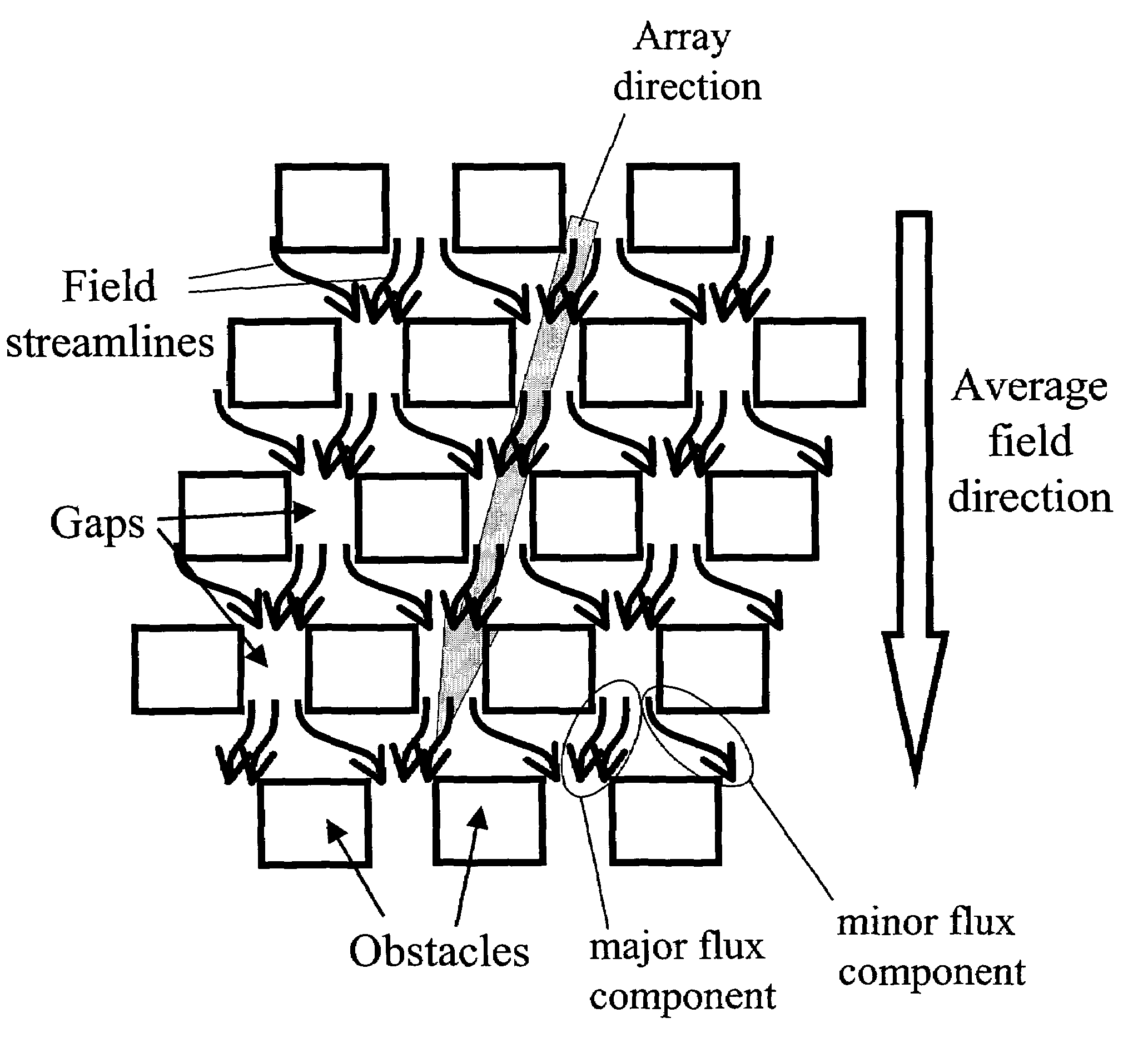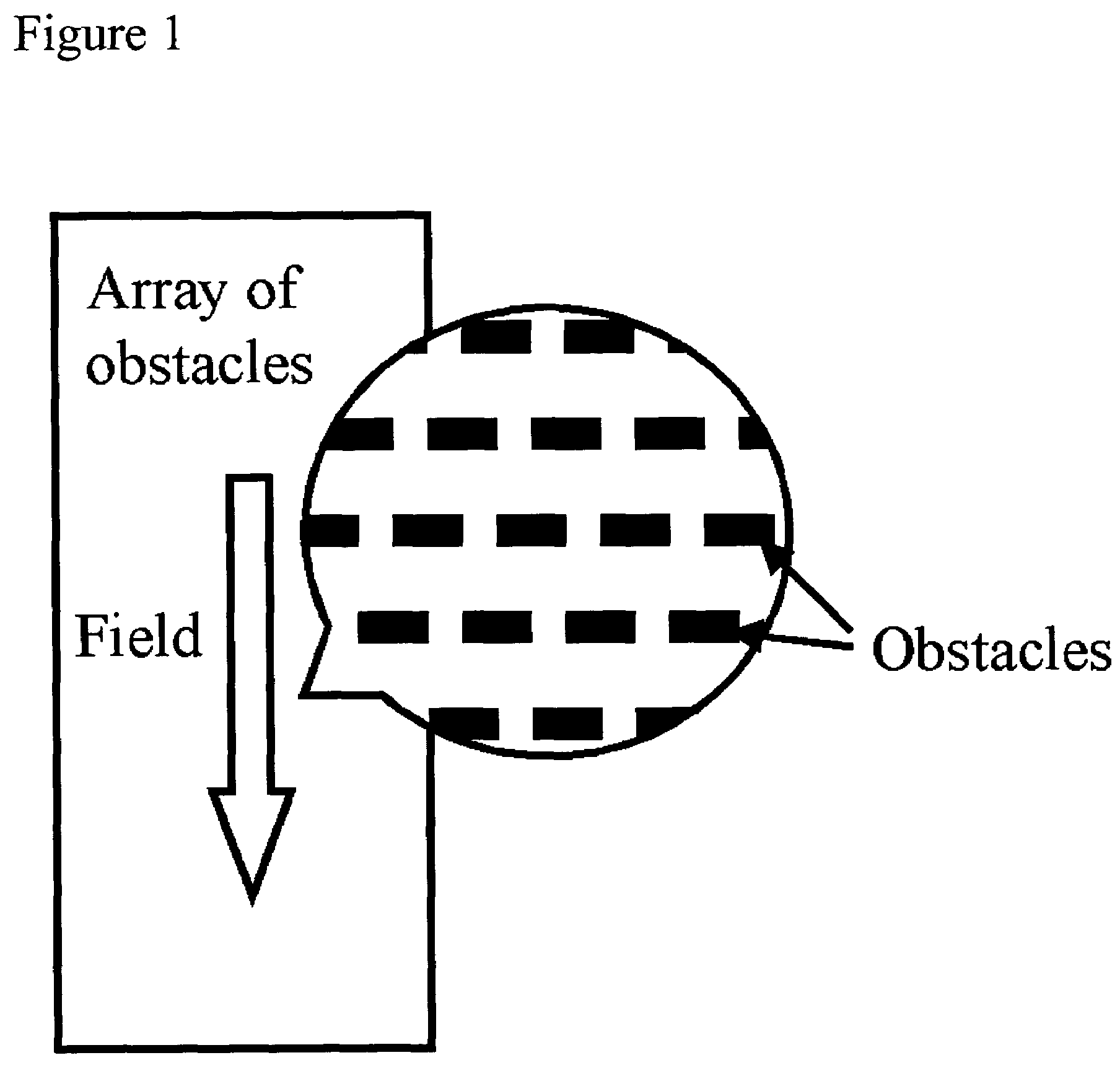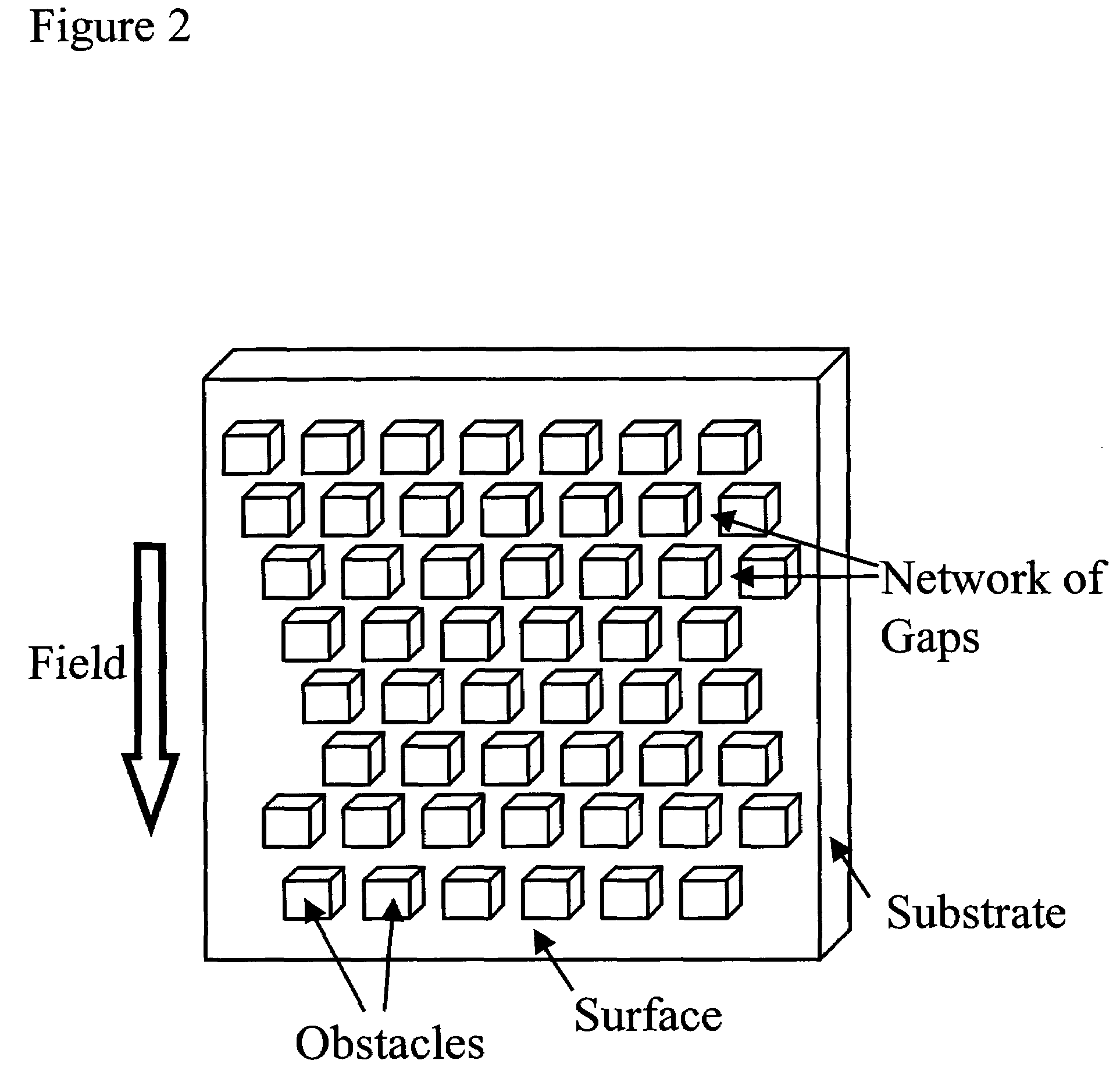Method for continuous particle separation using obstacle arrays asymmetrically aligned to fields
a technology of obstacle arrays and fields, applied in the direction of electrostatic separators, diaphragms, electrolysis, etc., can solve the problems of limiting resolution, limiting resolution, and limiting resolution,
- Summary
- Abstract
- Description
- Claims
- Application Information
AI Technical Summary
Benefits of technology
Problems solved by technology
Method used
Image
Examples
example 1
[0067]A microfluidic device was constructed (FIG. 19). The microfluidic channel is 16 mm long, 3.2 mm wide, and 10 μm deep. The array filling the channel consists of a square lattice of cylindrical obstacles (FIG. 19A), where the center-to-center distance, λ is 8 μm, and the spacing d between the obstacles 1.6 μm (FIG. 19B). The field employed here is a pressure driven field flow. The lattice is rotated by 5.7° (tan−1 0.1) with respect to the channel (FIG. 19A), which defines the flow direction. The rotation of tan−1 0.1 corresponds to a=0.1; thus a complete pitch λ is shifted every 10 rows (FIG. 19A). In principle, this configuration provides 10 slots, rather than the 3 discussed above. Particles are injected from a 10 μm-wide channel and carried across the array by a pressure-driven flow, which is made uniform by the many channels on the top and bottom of the array (FIG. 19C). The microfluidic channels and the array were fabricated on a silicon wafer using photolithography and dee...
example 2
[0075]One advantage of the flexibility of microfabrication is that the array can be designed to have varying gap widths as a function of distance, thereby optimizing separation for complex mixtures. To demonstrate this point, a device was fabricated containing 9 sections, each of which had a different gap width, starting with 1.4 μm and ending with 2.2 μm in increments of 0.1 μm (FIGS. 23 and 24). The varying gap widths were designed to tune the critical diameter in 9 stages from ˜0.70 μm to ˜1.10 μm, so that a given sized particle would switch from displacement mode to zigzag mode as the gap width increased.
[0076]A mixture of monodisperse (CV=1%) microspheres of 0.80 μm, 0.90 μm and 1.03 μm was injected from the small-gap side of the array (FIGS. 23 and 24), and flown at ˜400 μm / s using a driving pressure of 30 kPa. Initially, all microspheres were larger than the critical size, and migrated at the same angle with respect to the vertical flow (displacement mode). Soon, however, the...
example 3
[0078]A device having identical array dimensions and loading structures as in Example 1 was constructed for separation of nucleic acids according to molecular weight. The device was made of fused silica instead of silicon using the same techniques as described in Example 1. Electric fields, instead of pressure-driven fluid flow, was used as the field. A mixture of coliphage λ and T2 dsDNA (48.5 kb and 164 kb respectively) at ˜2 μg / ml and ˜1 μg / ml was used as a test sample, and visualized by fluorescent microscopy. DNA was stained with TOTO-1 (Molecular Probes) at a ratio of 1 dye molecule per 10 base pairs. 0.1% POP-6, a performance-optimized linear polyacrylamide (Perkin-Elmer Biosystems), and 10 mM dithiothreitol (DTT) were added to the ½× Tris-Borate-EDTA buffer to suppress electro-osmotic flow and photo-bleaching, respectively. The electric fields were applied using electrodes immersed in buffer reservoirs. The migration speeds of the molecules were controlled by the voltage app...
PUM
| Property | Measurement | Unit |
|---|---|---|
| flow speeds | aaaaa | aaaaa |
| flow speeds | aaaaa | aaaaa |
| diameter | aaaaa | aaaaa |
Abstract
Description
Claims
Application Information
 Login to View More
Login to View More - R&D
- Intellectual Property
- Life Sciences
- Materials
- Tech Scout
- Unparalleled Data Quality
- Higher Quality Content
- 60% Fewer Hallucinations
Browse by: Latest US Patents, China's latest patents, Technical Efficacy Thesaurus, Application Domain, Technology Topic, Popular Technical Reports.
© 2025 PatSnap. All rights reserved.Legal|Privacy policy|Modern Slavery Act Transparency Statement|Sitemap|About US| Contact US: help@patsnap.com



